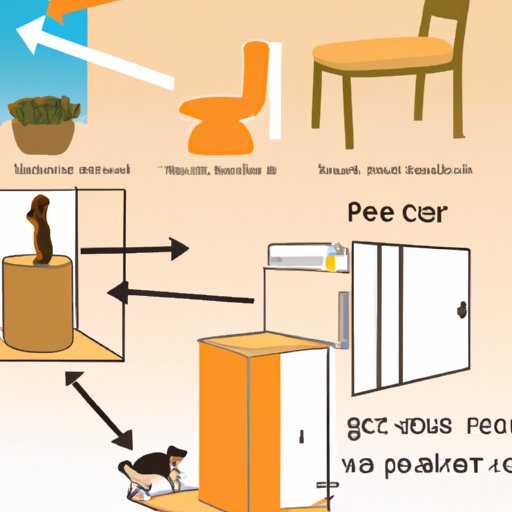Introduction
For cat owners, there are few things more frustrating and upsetting than discovering that your beloved feline friend has peed on your furniture. Not only can it cause damage to your belongings, but it can also be emotionally distressing for both you and your cat. In this article, we will explore some effective strategies for preventing cats from peeing on furniture, so that you and your furry companion can live together in harmony.
Why Cats Pee on Furniture
Before we dive into solutions, it is important to understand why cats may engage in this behavior in the first place. For many cats, urine is a powerful way of marking their territory and communicating with other cats. They may also resort to this behavior when they feel stressed, anxious, or threatened. Situations that can trigger this response include the presence of other cats, changes in routine, and even something as simple as a dirty litter box.
Strategies for Preventing Furniture-Peeing
Fortunately, there are many strategies that cat owners can try to prevent their cats from peeing on furniture. Here are some of the most effective options:
Using Pheromone Sprays
Pheromone sprays such as Feliway can help to reduce stress and anxiety in cats, making them less likely to engage in destructive behavior. Simply spray it on the furniture your cat has been targeting, or use a diffuser to disperse it more widely throughout your home.
Providing Multiple Litter Boxes
Make sure you have one more litter box than the number of cats you own. That means if you have one cat, you should have at least two litter boxes. Place the litter boxes in different locations throughout your home so your cat has plenty of options. If your cat is currently peeing on furniture, try placing a litter box nearby and gradually moving it to a more appropriate location over time.
Training the Cat to Use a Scratching Post Instead of Furniture
Cats often pee on furniture because they are marking it with their scent, but they may also do so when they are scratching on it. To prevent this, make sure your cat has plenty of appropriate scratching surfaces, such as scratching posts or pads. Encourage your cat to use them by placing them in high-traffic areas and rewarding your cat when he or she uses them.
Using Positive Reinforcement to Reward Good Behavior
One effective way to discourage negative behaviors like peeing on furniture is to reward positive ones like using the litter box. When your cat uses the litter box, give him or her praise, attention, and treats. Over time, your cat will learn that good behavior is rewarded.
Ensuring That the Cat’s Environment Is Enriched and Stimulating
Cats are intelligent and curious animals, and they need plenty of stimulation to keep them happy and healthy. Make sure your cat has access to toys, scratching surfaces, and perches or hideaways where he or she can retreat and feel safe. Consider setting up a window perch where your cat can watch birds and other wildlife outside.
Consulting with a Veterinarian or Animal Behaviorist for Additional Advice
If your cat continues to pee on furniture despite your best efforts, it may be time to seek additional advice from a veterinarian or animal behaviorist. They can help you identify any underlying medical or behavioral issues that may be causing the problem and offer targeted solutions.
The Importance of Consistency
Regardless of which strategies you choose to try, it is important to be consistent and persistent in your efforts. Cats thrive on routine and predictability, so you will need to be patient and committed if you want to see results. It may take several weeks or even months before your cat’s behavior improves, so don’t give up too soon. Remember, every small step in the right direction is a success!
Conclusion
Dealing with a cat who pees on furniture can be a frustrating and emotionally draining experience, but it is important to remember that with the right strategies and mindset, it is possible to prevent this behavior. Whether you try pheromone sprays, provide multiple litter boxes, or consult with an expert, there are many solutions out there. Keep in mind that consistency is key and don’t be afraid to ask for help if you need it. With time and patience, you and your cat can live together in harmony.


